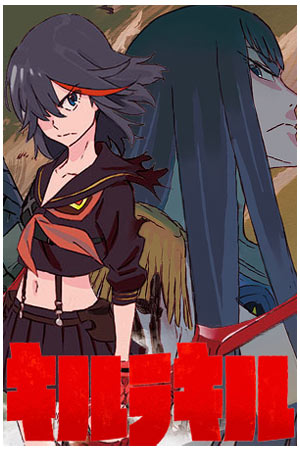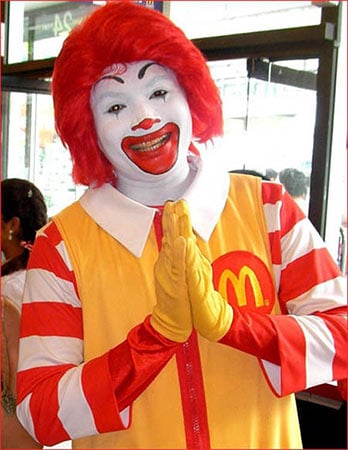“The distance from Earth to space is the same as from Tokyo to Hakone, about 50 miles/80 km.” This was a tidbit from a Japanese trivia show which illustrates that outer space isn’t really all that far away, about the distance of a short drive from Tokyo to Hakone, a pleasant area near Mt. Fuji. I’m planning a trip to Hakone with a friend next week, and since it’s the setting for Evangelion, I thought I’d re-watch the Rebuild of Evangelion movies so I can figure out what 聖地 seichi “holy lands,” e.g. real places that appear in anime, we want to visit. There are a lot of changes in new movies compared with the original 1995 series, including tightening the story and tweaking the characters. (Asuka is less of a classic tsundere, for example.) Another change is the arrival of Hollywood-style product placement, and everything from Lawson Convenience Stores to Yebisu and Kirin Beer to UCC coffee and Doritos is clearly visible to viewers in the new films. No company benefited from the trend towards product placement and anime cross-marketing than Pizza Hut, who signed promotional deals for everything from Code Geass to Oreimo to the new Eva movies, raking in money whenever otakus in Texas or the U.K. or Santiago, Chile get hungry for some pizza while watching anime. I’m quite happy when they put real products in anime, like the official Totoro caramels or those Grave of the Fireflies candies, since it allows us to share an emotional connection with products the Japanese also love.
After finishing up with Eva for the evening, I was still in a Gainax-ey kind of mood, so I turned on a few episodes of the new Kill la Kill. (It’s not actually a Gainax show, but is made by the director of Gurren Lagann and some animators from Hideki Anno’s animation studio Khara, so it sort of is, spiritually.) Kill la Kill is a hard anime to describe: it’s basically Gurren Lagann meets Panty and Stocking with Garterbelt meets スケバン刑事 Sukeban Deka, aka Delinquent Detective Girl, an 80s TV series about a street-tough high school girl who fights crime undercover using her “battle yo-yos.” Everything about Kill la Kill is meticulously designed, from the low frame-rate style of the retro animation to the outrageous battles in each episode, and it’s just what the doctor ordered for fans who are feeling a touch of “harem anime fatigue.” A lot of the references in the show will doubtless fly over the heads of most foreign viewers, such as the character Mako, whose design is based on a 1982 anime called Macchingu Machiko-sensei, and the flamboyant fighting scenes are an homage to a 1986 series called Hono no Tenkosei, or Blazing Exchange Student. Of course, “Gainax” has a long history of extensively referencing classic anime series: one of my favorite shows is Gunbuster, the story of the battle between humans and an alien race that spans 12,000 years…yet it’s all one big homage to a 1970s tennis anime called Aim for the Ace.

I’m a fan of the frenetic “Gainax” anime Kill la Kill.















